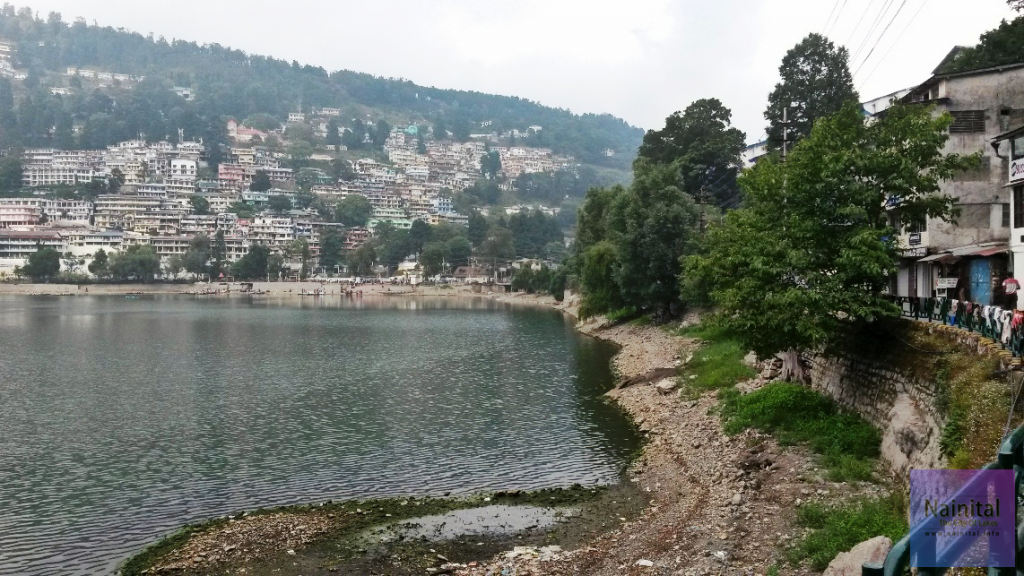Environmental Degradation
Articleafforestation, Bheemtal, Bhimtal, Catchment, De-silting, Ecosystem, Environment, gbpuat, Khurpatal, Landslide, Maitri, Mission Butterfly, Nainital, Nainitalday, Naldamyanti, Naukuchiyatal, Sattal, Sukhatal, UttarakhandWith 1 commentEEnvironmental Degradation : In recent years, academics, geologists, concerned citizens and the judiciary have become alarmed at the rate of new construction in Nainital and its effect on the Naini Lake. As a result, efforts have been undertaken to check the deterioration of the lake and its surrounding ecosystem. De-silting of the lake and afforestation of the catchment area have been initiated; however, these measures have not been sufficient to cope with the ever increasing pressure on its fragile ecosystem. The number of tourists, and with them the number of vehicles entering the town, is rapidly increasing and this, if not checked, could turn Nainital into a disfigured and despoiled town.

Environmental Degradation
For example, it has been noticed that hundreds of fish die in Naini Lake every winter, the last such event having occurred in January 2006. Naini Lake is 20 m (66 ft) deep, but, according to experts, the level of oxygen in the hypolimnic layer (the bottom, colder, stagnant and constant temperature layer) is much lower than is required to sustain fish—and this is mostly due to pollution, which includes illegal dumping of rubbish. The problem is exacerbated during winters when the polluted and nearly anoxic (i.e. lacking oxygen) water from the bottom moves up to the surface on account of the lower temperature of the surface water. Fish die due to low oxygen content in this altered surface water. According to Rakesh Kumar, once District Magistrate of Nainital, “The main problem is trying to syphon off the water from the hypolimnic layer, 6 m (20 ft) from the bottom of the lake. Once that is done, we can increase the oxygen content in the lake using aeration methods. That is the only permanent solution.”
In recent times some enlightened citizens have come forward to halt the degradation of this beautiful town. Since 2007 every 18 September is now observed as ‘Clean up Nainital Day’, in remembrance of devastating landslide of 18 September 1880, which consumed 151 lives. On this historic day students and other sections of society join hands to clean the town. Further, a women’s group ‘Maitri’, does this cleaning work voluntarily now on every 18th. Taking cue from this, the Municipality and District administration have started the scheme of ‘Mission Butterfly’ for the solid waste management and have appointed ‘Lake Wardens’ from the civil society to keep an eye on the polluters.
In recent years with the help of government and local environmental groups the lake Aeration Project was started. The primary aim of the project was to decrease the BOD (biological oxygen demand) of the lake water. Anaerobic digestion of lake sediments is a much slower process than with aerobic digestion. Where aerobic digestion can result in the control or reduction of organic sediment levels, anaerobic digestion almost always allows organic sediments levels to increase. During anaerobic digestion, bacterial enzymes and lack of oxygen make the nutrients in the bottom sediments soluble. Then the nutrients return to the water column and are available to support new weed and algae growth. Anaerobic conditions at the lake bottom have a damaging effect on the food chain that supports fish populations as well as reducing or eliminating fish habitat, ultimately resulting in a reduction of the fish quality, size and quantity.
To resolve this problem and improve the quality of the lake water, many underground high pressure jets were laid near the lake bed at various places throughout the lake. The jets are supplied with highly pressurized air through a compressor located near the Golu Devta temple. This compressed air is released via a net of jets near the lake bed, the air bubbles through the water. In the process aeration the water and improving the quality of water. Today one can see the results of hard work and efforts of the past few years.
The lake water has become visibly cleaner and BOD levels have reduced dramatically. To complement the lake aeration project, with the help of scientist from the Govind Ballabh Pant University of Agriculture and Technology, Pantnagar. A number of plankton and algae eating fishes were introduced in the lake. This has resulted in speeding up the cleaning up process. Now unlike in the past no more dead fishes on the lake’s surface. In fact now the large number of colorful healthy fishes are a beautiful sight to see for tourists and local alike.
Source : http://en.wikipedia.org/wiki/Nainital

We Must Do Something Now !!